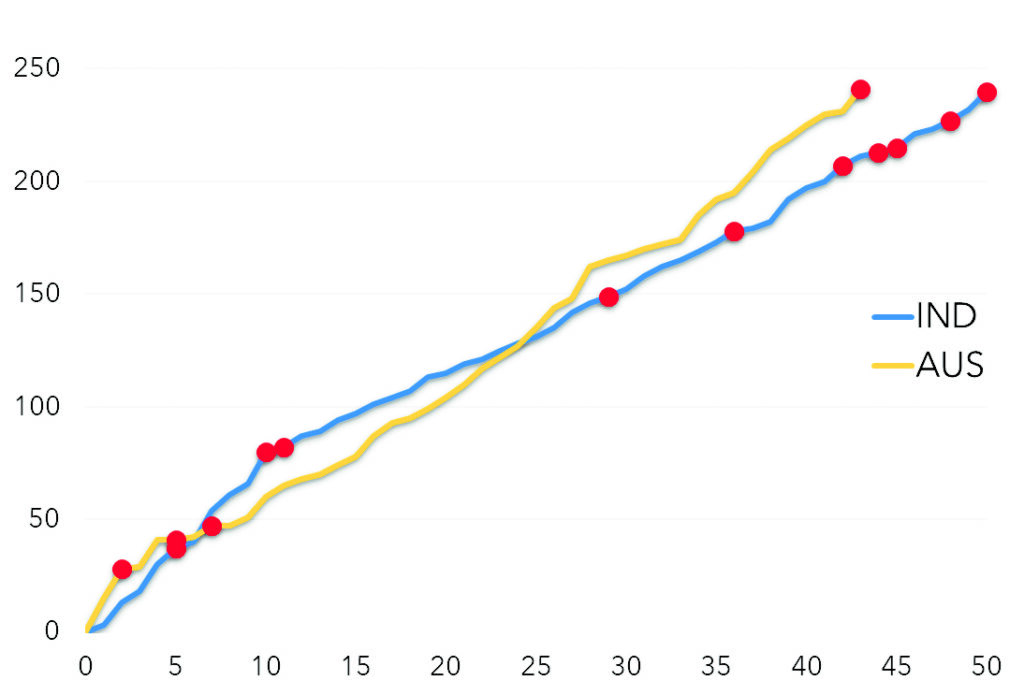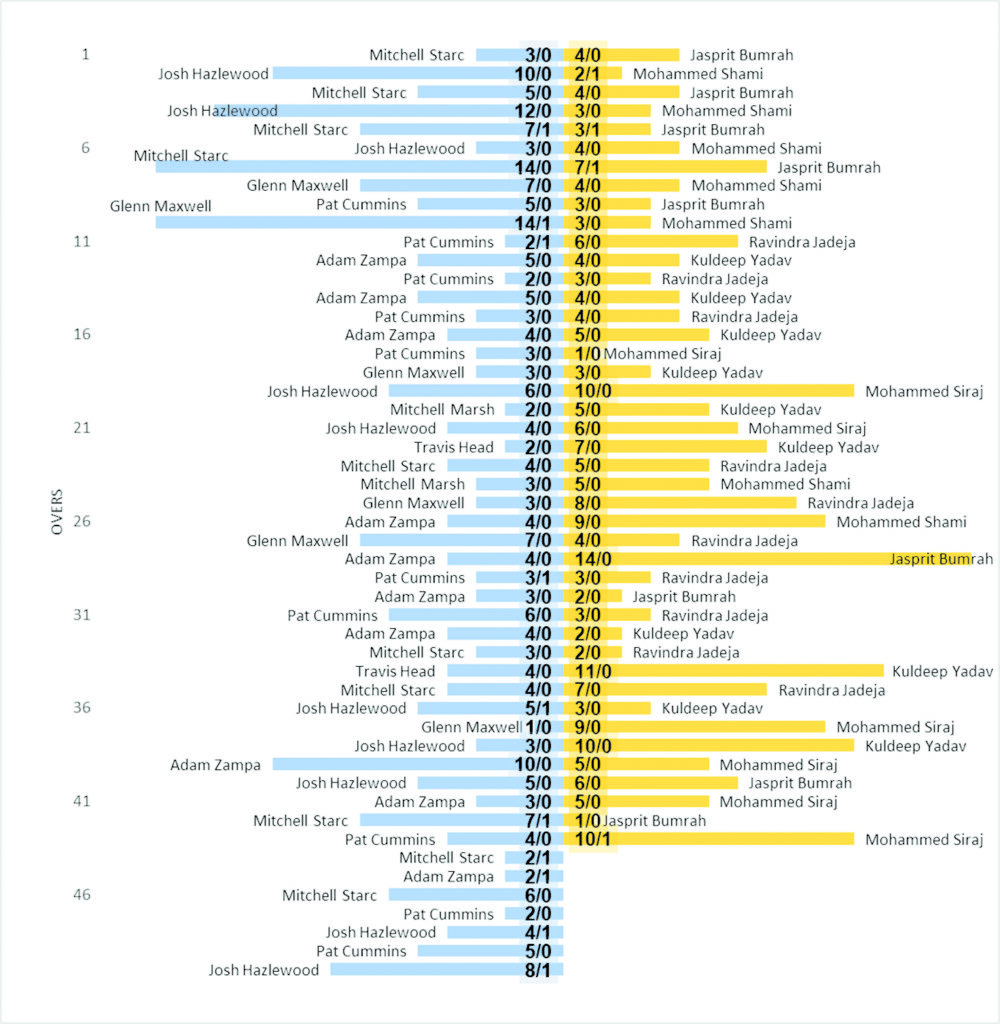Cricket’s essence unveiled: Statistics reveal India top batting order demise.
NEW DELHI
Australia’s unexpected choice to bowl first in the ODI World Cup final proved decisive, stunning even seasoned cricketer Ashwin. Former skipper George Bailey clarified the strategic move, emphasizing their familiarity with the black soil and predicting favorable conditions under lights. Bailey acknowledged the unpredictable nature of cricket, noting the tactic’s success hinged on the unique circumstances of the day.
On paper, the final appeared one-sided with India boasting a formidable top-order batting lineup, strong bowling, and a top-notch spin attack. However, Australia recognized the vulnerability in India’s soft middle order and batting tail, elements not exposed in previous encounters. To tactically counter India, matchups needed to be meticulously planned with Swiss time precision, securing early wickets a crucial strategy for Australia.
Batting first after losing the toss, Team India posted an unchallenging total of 240 runs, in line with their recent clash against England 229 runs. Australia’s planned strategy succeeded as India lost early wickets in the middle, exposing the soft underbelly.

The match showcased India’s scorching start in the first powerplay, accumulating 80 runs for the loss of two wickets. However, the team struggled to maintain momentum, managing only four fours and 160 runs in the subsequent 40 overs.
Australia’s response was closely contested, reflecting a seesaw battle, with both teams evenly matched in the 25th over. By the 40th over, India had posted 197 runs, while Australia crossed the 200 mark, ultimately reaching 225.
In the last powerplay, India could only manage 40 runs in the last 10 overs, showcasing the pressure exerted by Australia’s bowlers.
The seesaw battle of momentum shifts epitomized the true spirit of cricket, culminating in Australia’s well-deserved victory.
India’s innings, featuring a strong start from Shubman Gill and contributions from Rohit Sharma and Virat Kohli, fell short despite KL Rahul’s commendable 66-run innings.
In response, Australia, adapting to India’s batting challenges, strategically introduced spinners after 10 overs. Despite initial pressure, Australia’s middle order displayed resilience, reaching 87 runs in 16 overs, setting the stage for their pursuit of 241 runs.

Australia secured victory by six wickets with standout performances from Travis Head and Marnus Labuschagne. Rohit Sharma’s outstanding campaign saw him amass 597 runs, leading India to the final. Virat Kohli’s dominance included a record-breaking 765 runs, and Shami emerged as the leading wicket-taker with 24 scalps, setting a historic record for India.
Australia’s emphasis on mental prowess over records in the lead-up to the finale mirrored the triumphant spirit of the 1999 World Cup final, characterized by a tumultuous opening and a scrappy semifinal. In the end, the constants in the game proved to be tactics and execution, standing firm amidst glorious uncertainties.
Sunil Yash Kalra is a women’s cricket historian and founder of Indian Sports Fans.

